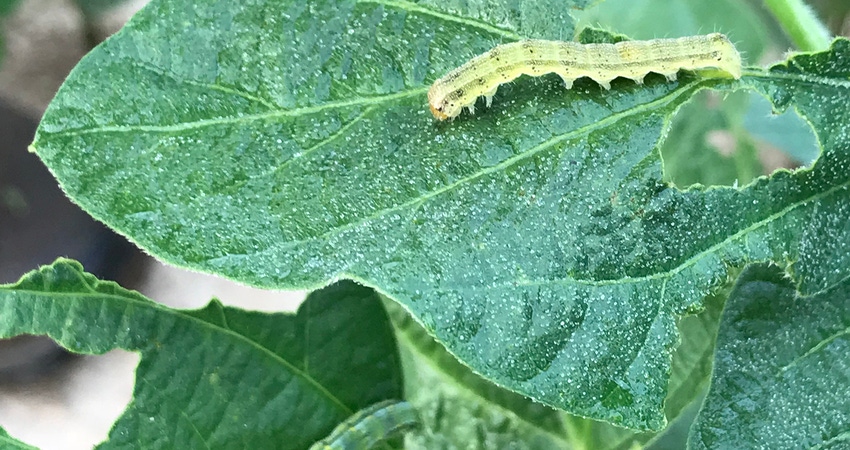April 22, 2022

Tucker Miller has a list of row crop producers who depend on him to manage insects in their fields, and every year brings a different pest challenge that threatens crop profitability.
Miller, an independent crop consultant with Miller Entomological Service Inc. in Drew, Mississippi, said there is always uncertainty in insect matters.
“We try to be on top of the situation by scouting and looking for the insects that usually appear at certain times of the crop growth stage,” Miller said.
“We work closely with the Extension Service because they have test plots across the state and on a lot of my clients’ farms,” he said. “They use these plots to develop thresholds for insect control and to test the effectiveness of different chemicals labeled for insect control.”
For insect control, the Mississippi State University Extension Service offers the “Insect Control Guide,” available in printed form and online. This document includes a wealth of information on different pests, chemical control and when to trigger a pest treatment. The research-backed data is a primary tool for Mississippi farmers navigating their way to a successful harvest.
“There is no one-size-fits-all approach to insect control,” Miller said. “We monitor the research MSU does, and it’s spot on giving us the information we need for decisions.”
Increased costs
Insect control got a lot harder in 2021 when farm chemical costs increased almost fourfold by the end of the year.
Higher than usual input costs can compress profit margins. At MSU’s Row Crop Short Course held in December, specialists updated participants on the insect scene from 2021 and advised on decision-making criteria for 2022.
 Whitney Crow is part of the Mississippi State University team that conducts ongoing research and tests to determine the best and most cost-effective ways to manage insect pests in row crops. (DREC/Kenner Patton)
Whitney Crow is part of the Mississippi State University team that conducts ongoing research and tests to determine the best and most cost-effective ways to manage insect pests in row crops. (DREC/Kenner Patton)
Whitney Crow, an entomologist with the MSU Extension Service, said pest control is always situationally dependent.
“The No. 1 goal in pest management is to follow best management practices and make economically sound applications of pesticide,” Crow said. “That means you may be altering when you decide to make an insecticide application based on current conditions.”
Scouting and monitoring pest populations are always the first steps in insect control. After the insects are identified and their populations confirmed, producers then must assess their crop’s tolerance level and injury, which is often dependent on the crop’s maturity status.
“Only then can we decide if we need to apply a control product,” Crow said.
Gathering information
MSU agricultural economists gather information on all the crop input costs and then compile that with possible market prices for the crop. Entomologists used this data along with other information to establish economic thresholds for the different row crops, a reference to the level of pest infestation at which management action is financially justified.
The economic threshold is different from the economic injury level, which is the lowest population density of a pest that causes economic damage.
“If we make a treatment before reaching the economic injury level, then the cost of the treatment outweighs the benefit,” she said. “If we wait until we have reached the economic threshold and spray around the economic injury level, the benefit is greater than the cost.”
Each insecticide application decision should be weighted by a variety of factors such as crop value, effectiveness of the treatment available and management cost.
"Management guidelines are simply guidelines, and every situation is different, but the end goal never changes: We want you to make economically sound decisions for your crop situation,” Crow said.
The “MSU Insect Control Guide for Agronomic Crops” is updated annually. Look for Extension Publication 2471 online at http://extension.msstate.edu/publications.
Source: Mississippi State University, which is solely responsible for the information provided and is wholly owned by the source. Informa Business Media and all its subsidiaries are not responsible for any of the content contained in this information asset.
You May Also Like




